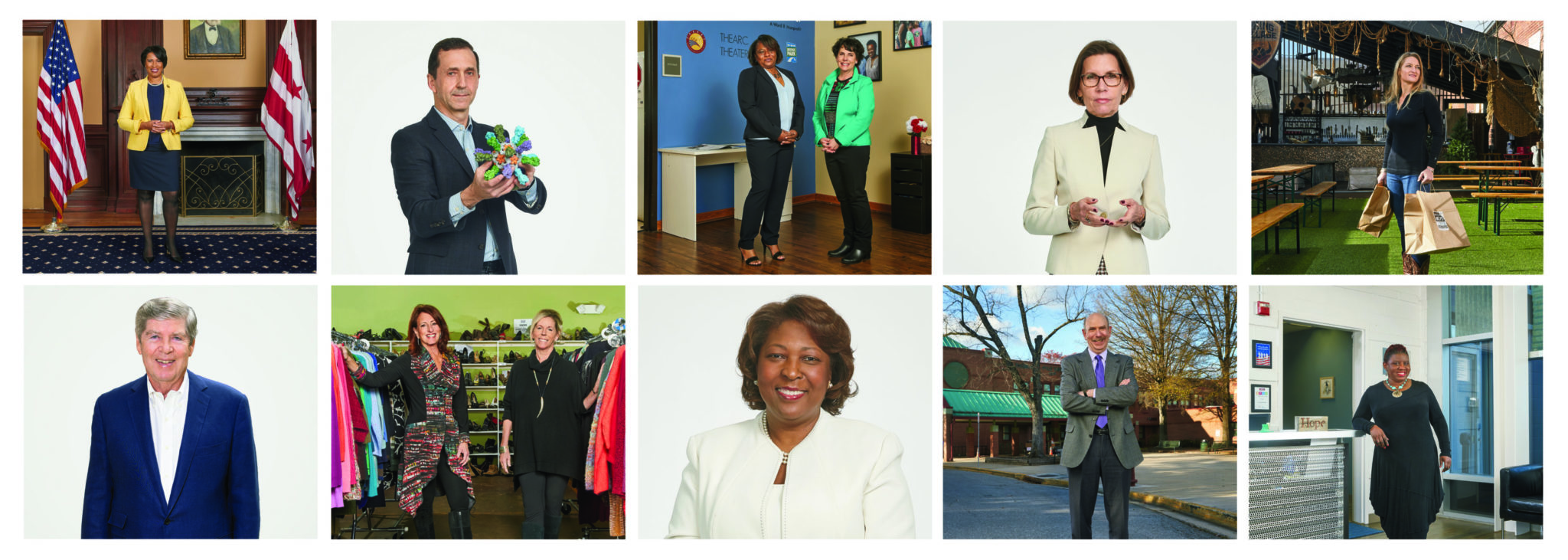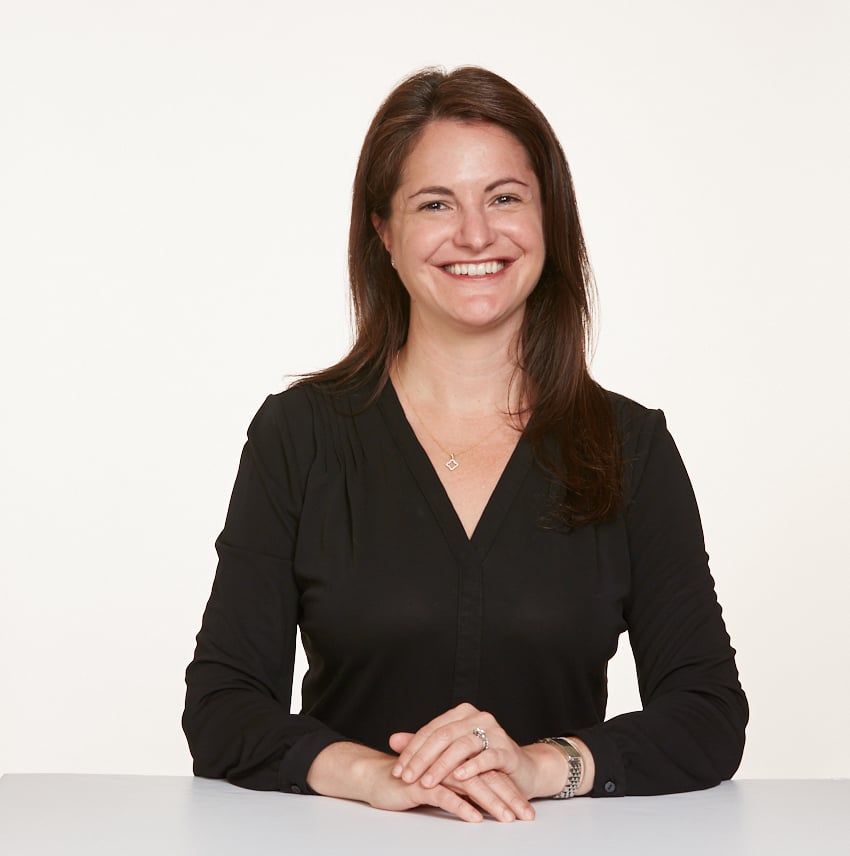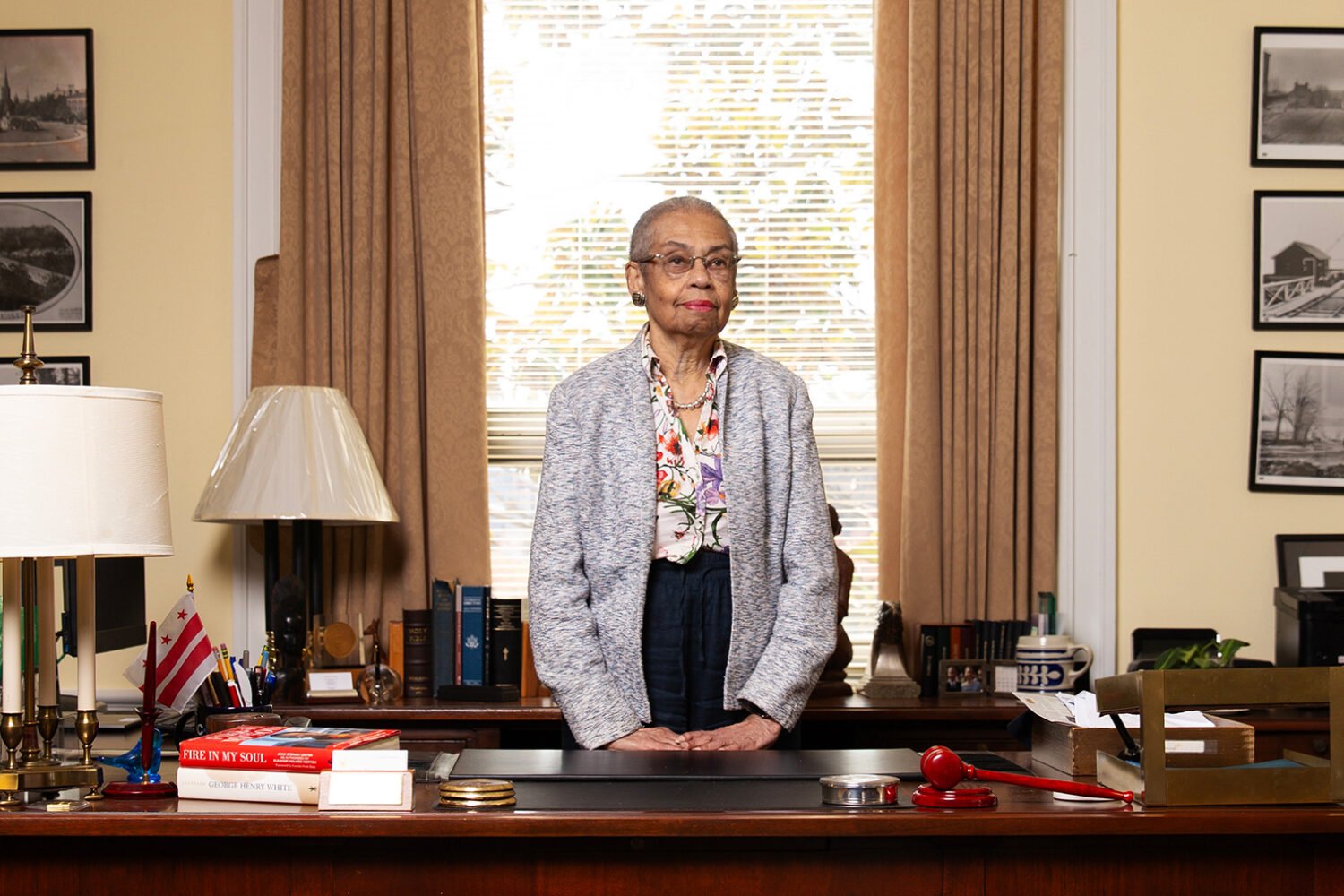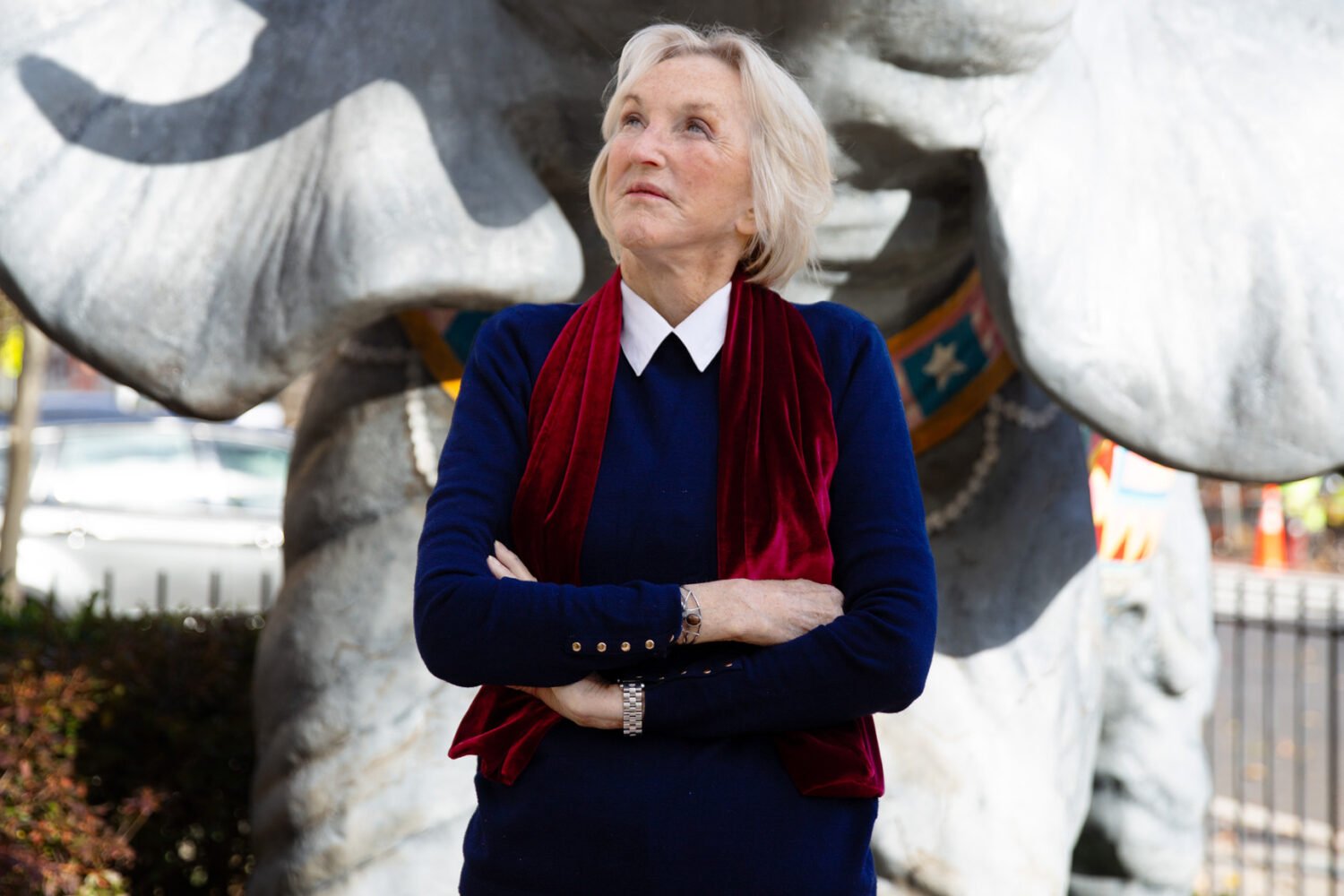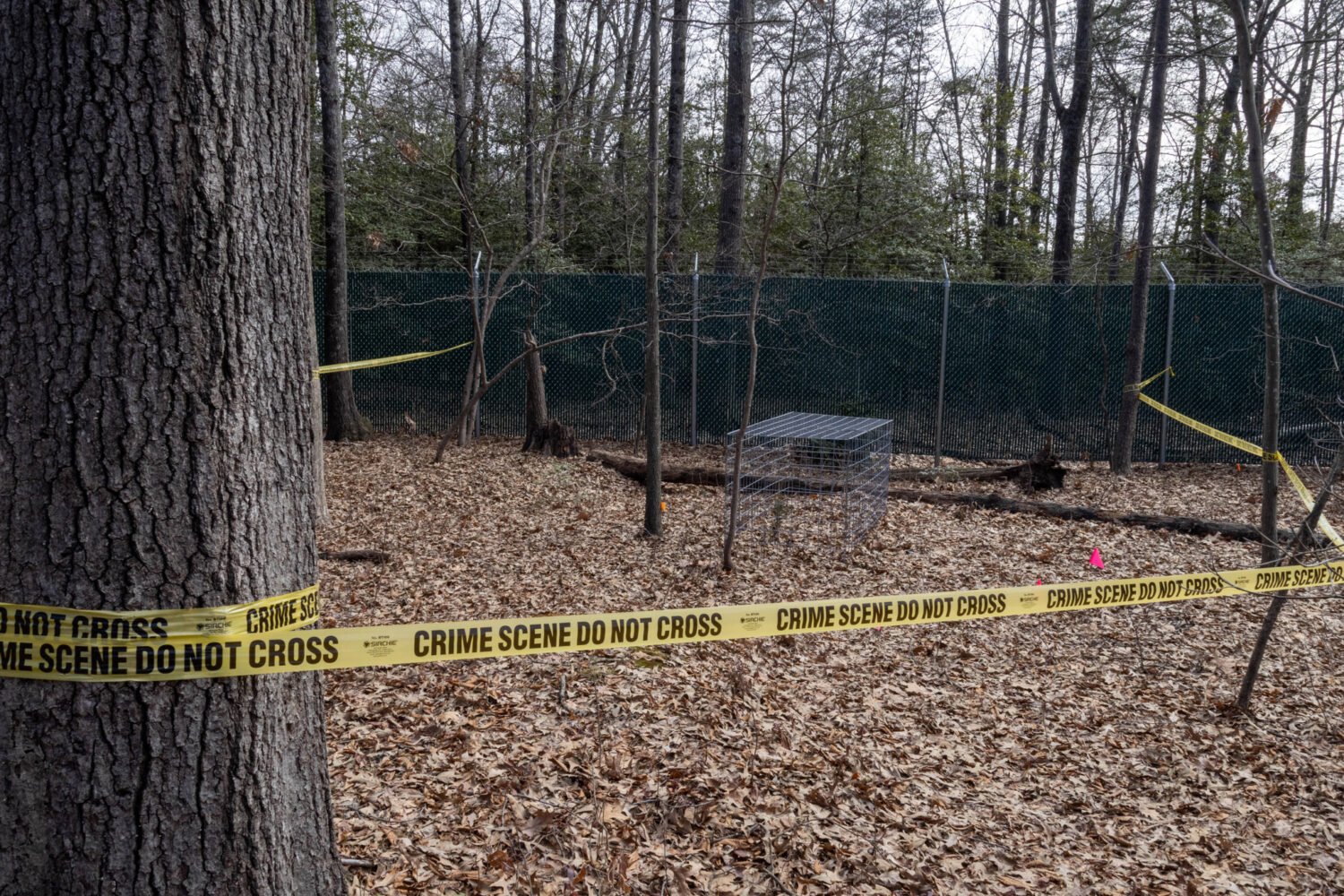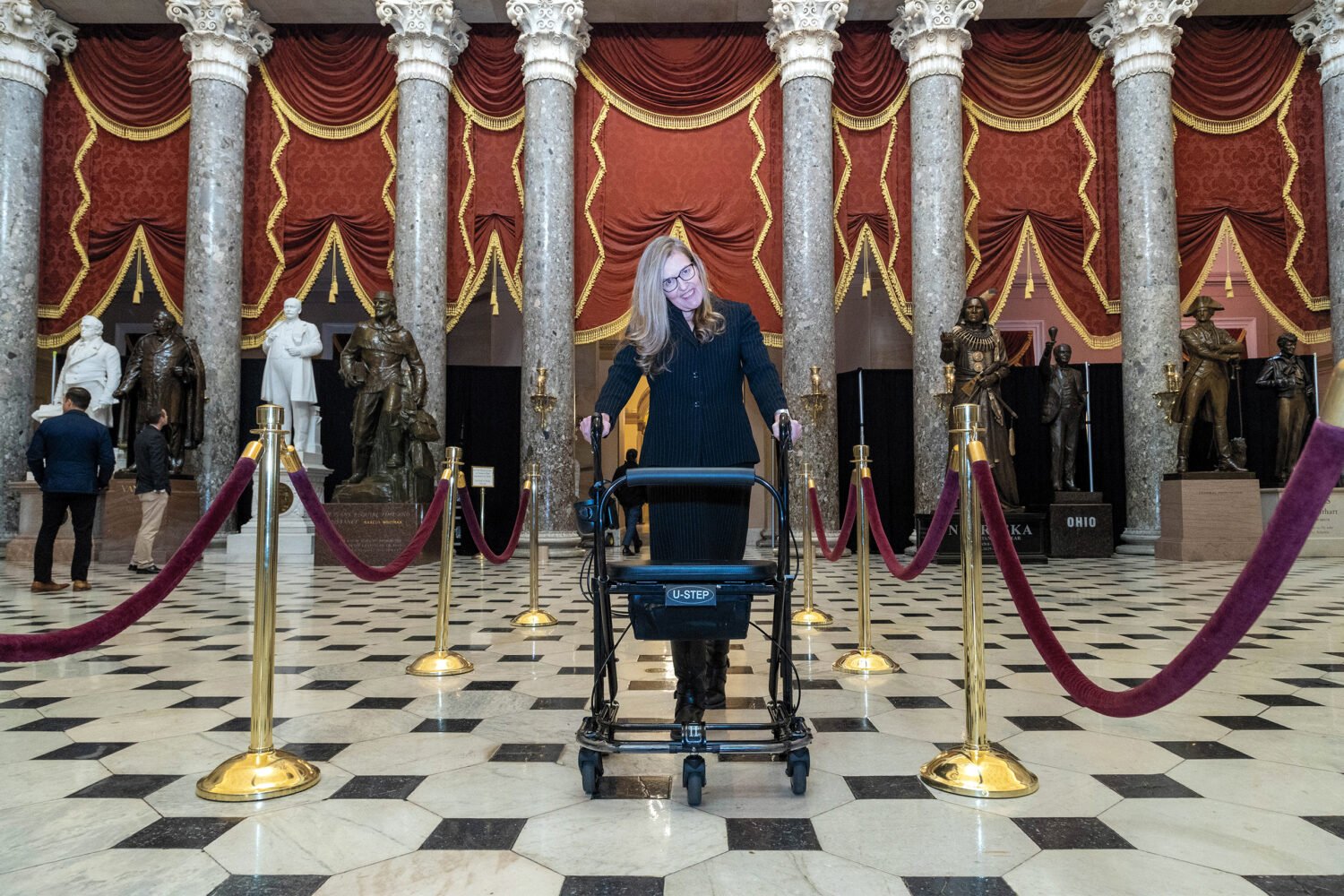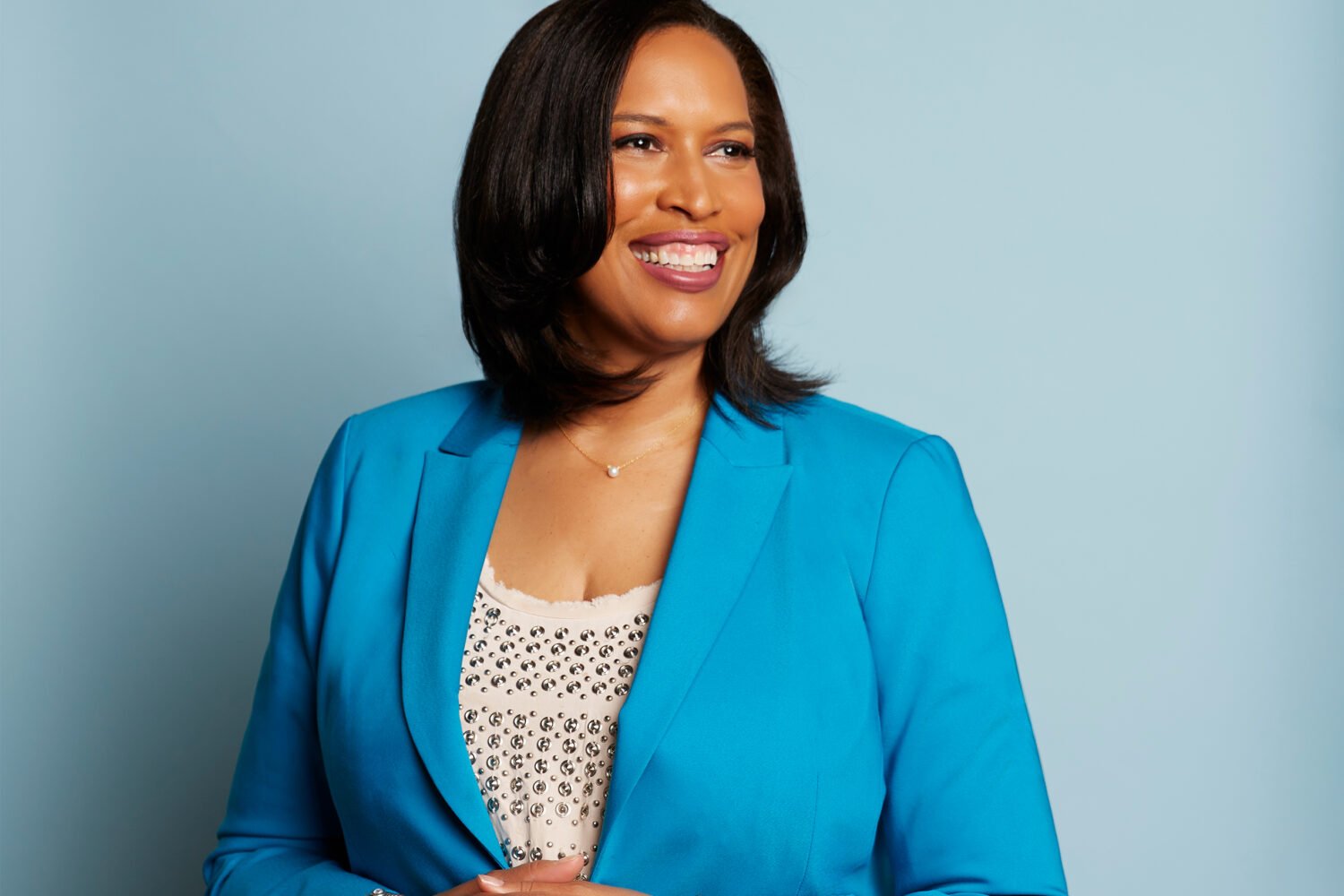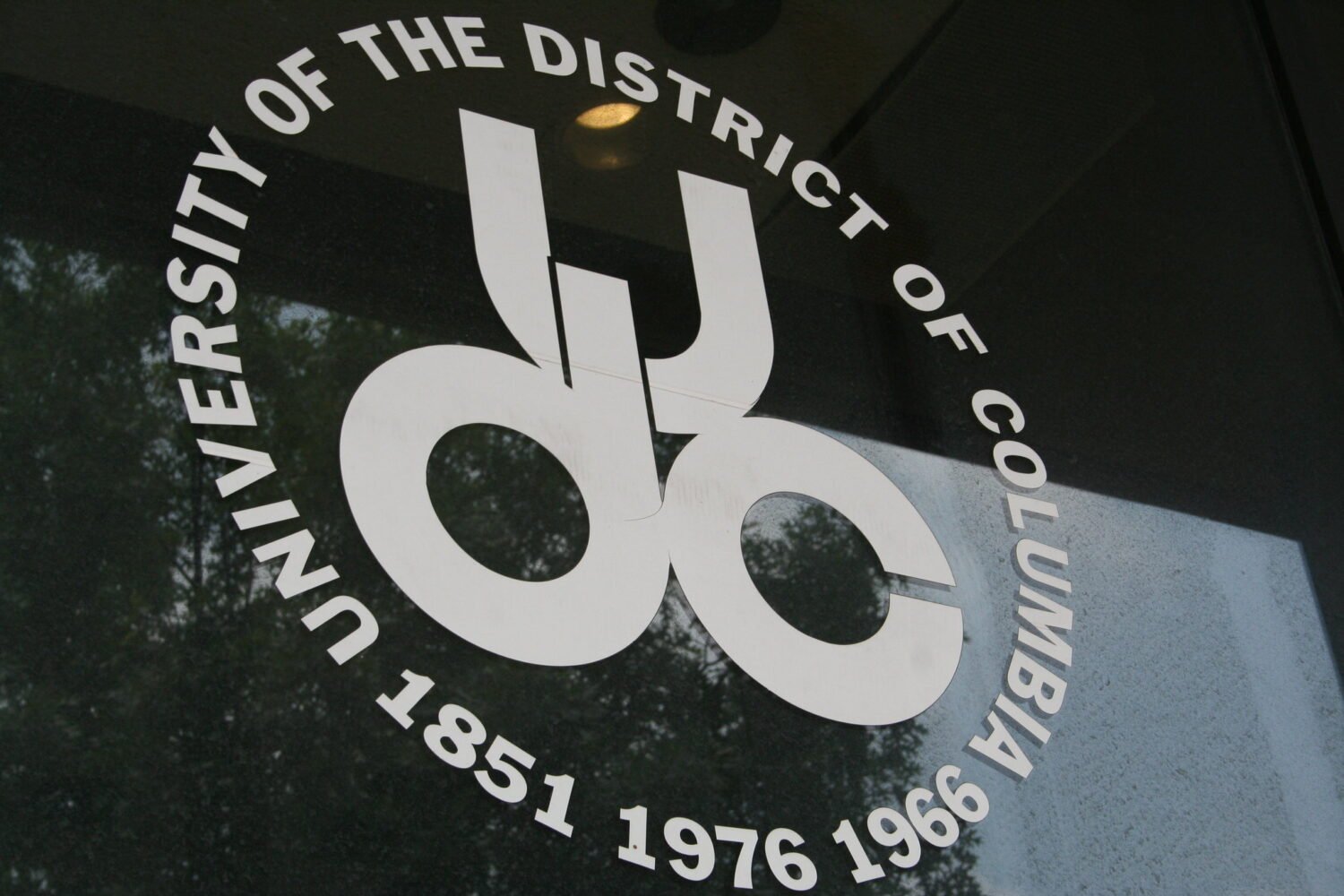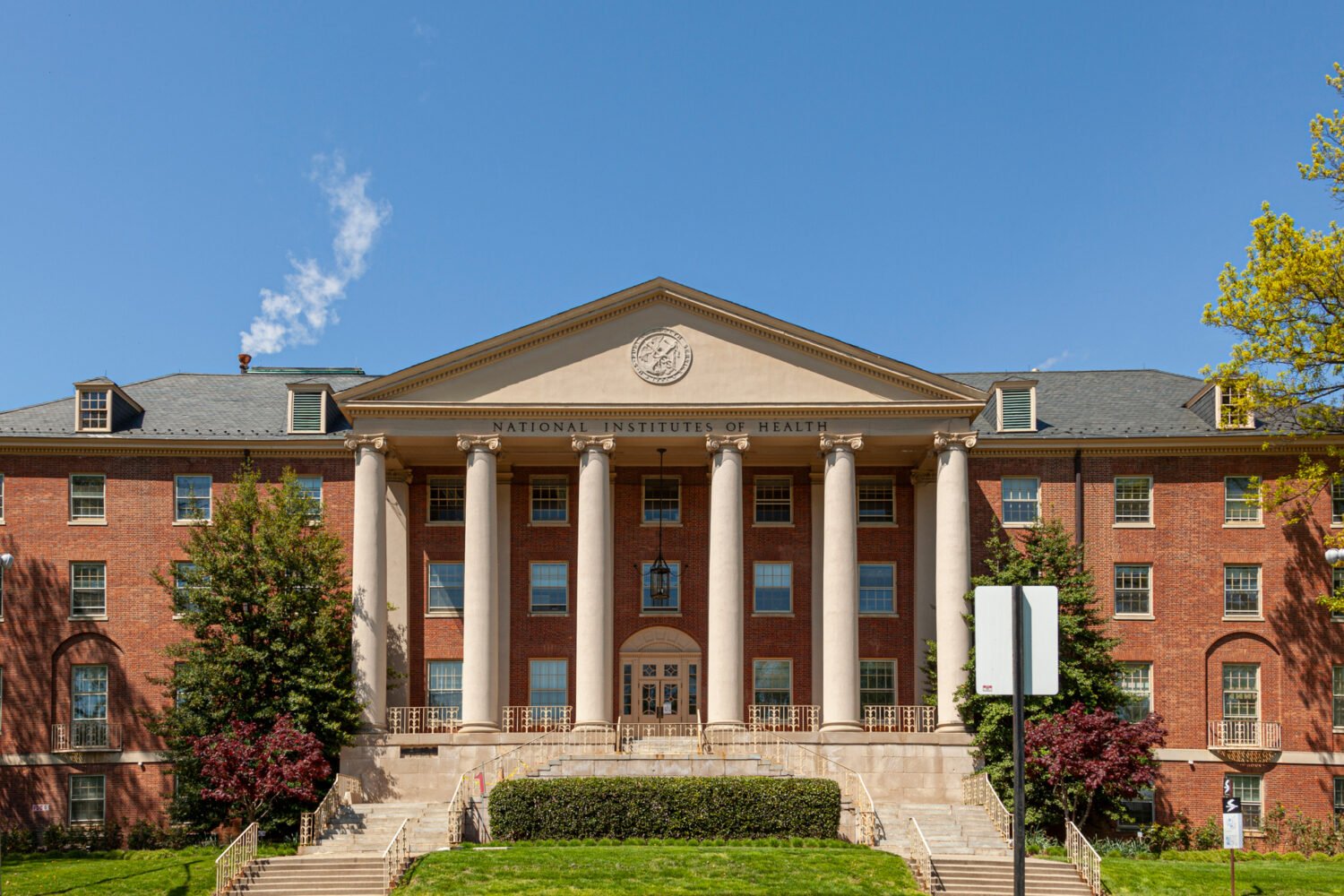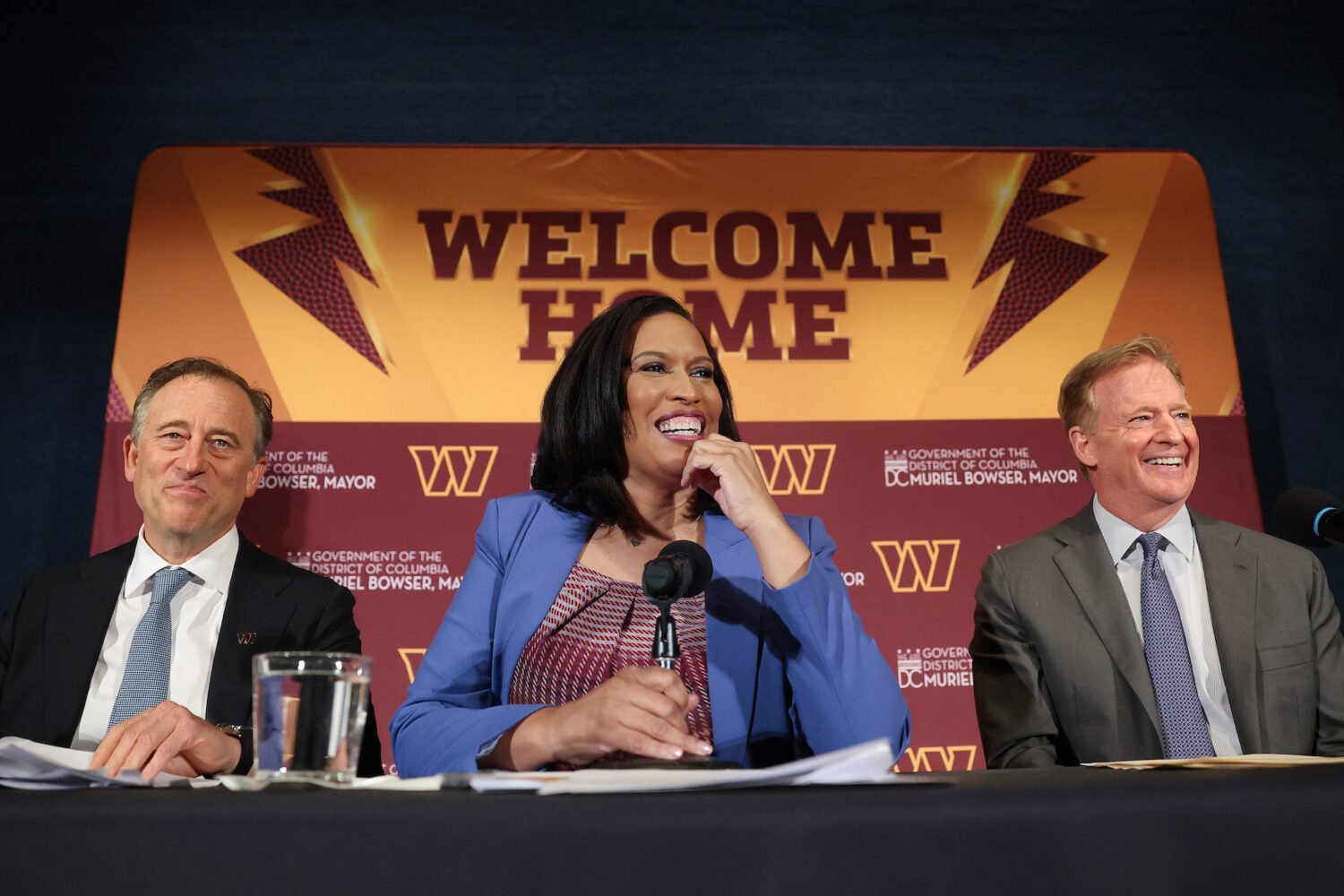Contents
Muriel Bowser
Mayor of the District of Columbia
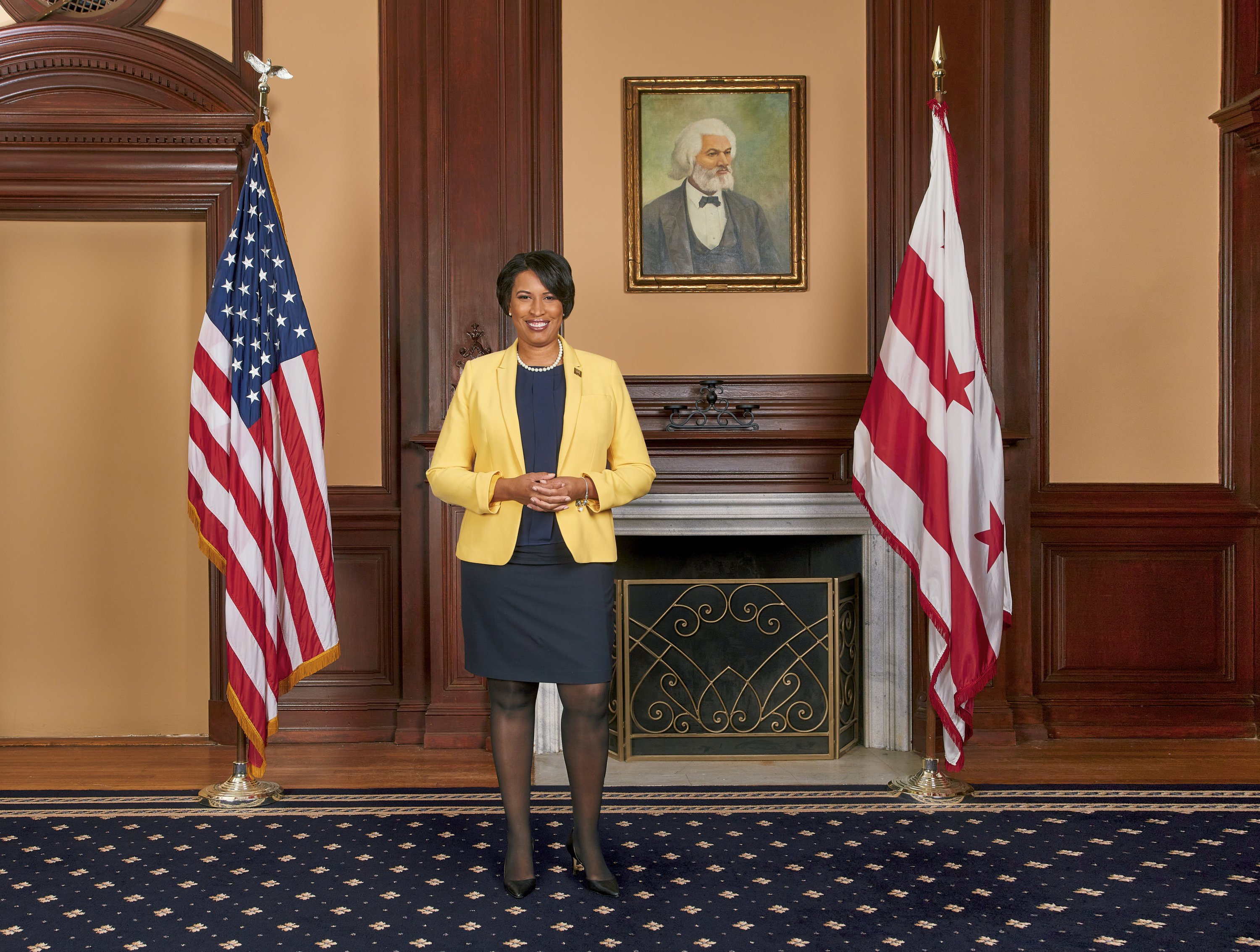
The mayor knew the moment she had to act. In early June, with the nation in turmoil between the pandemic and racial-justice protests, President Trump literally threw gas on the fire in DC—ordering police to tear-gas peaceful protesters, deploying federal troops, and threatening to unleash “vicious dogs.”
“They wanted to use the District of Columbia as a prop and bring in federal forces to say, ‘I’m the tough guy in charge.’ It was also a warning to other cities,” says Muriel Bowser. “I said if we as Americans allow this in the District, he’ll do it someplace else. And not having an army of our own, we used art.”
In the wee hours of June 5, Bowser directed her Department of Public Works to create what’s now Black Lives Matter Plaza. More than just a street mural, it’s a symbolic pedestrian zone near the White House, emblazoned by local artists, DC residents, and visitors with the activist slogan and the District’s flag. The affirming act was copied nationwide by at least 19 cities that created similar safe havens.
Says Bowser: “It demonstrates that messages of affirmation and unity are very important at a time like this.”
DC’s first two-term mayor in nearly two decades, Bowser was previously known as a measured bureaucrat responsible for quieter successes—albeit important gains, such as doubling the city’s investment in affordable housing and, before Covid, reducing unemployment by nearly 30 percent and increasing government spending on small businesses by $285 million. Since the pandemic, Bowser has stepped up her role as a protector for the people. She has organized a coronavirus response that’s been governed by caution: The District has remained in phase two while neighboring states have jumped to, and then retreated from, phase-three regulations. The response has also counted some successes—DC Health achieved the highest per-capita testing rate in the nation in December. And now, more than ever, she’s a vocal advocate for statehood.
What I’m energized by is the opportunity to bring our city back from Covid. We’ll have to think of how we’re going to rebuild our economy, rebuild our businesses, get our kids back on track. That’s a whole new ballgame in terms of what I was working on for the past six years, and what I’ll be doing for the next two years and beyond.
Dr. John Mascola
Director, Vaccine Research Center, NIH
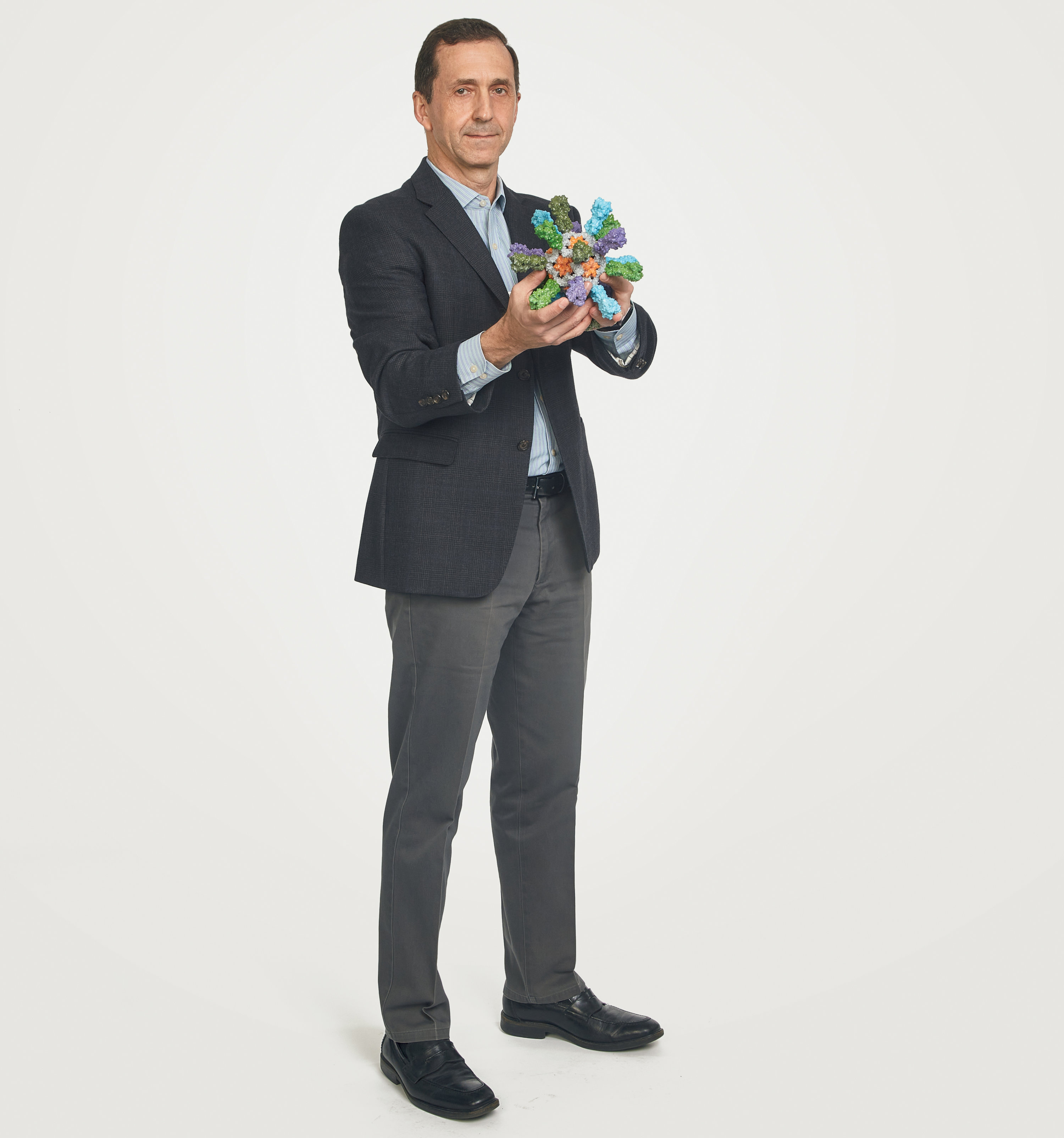
Most people are unprepared for a global pandemic, even global leaders. But Dr. John Mascola and his team of scientists at the Vaccine Research Center, part of NIH’s National Institute of Allergy and Infectious Diseases, have spent more than a decade studying diseases with outbreaks—and rapid responses—in mind. Which is why they were able to develop a promising Covid-19 vaccine with biotech partner Moderna that started human trials within 65 days—a record.
“We’ve thought a lot about responding quickly, because in the past we’ve had partial successes—outbreaks of Ebola and Zika where vaccines did come, but not quickly enough,” says Mascola.
The VRC, which Mascola has led since 2013, was founded in 2000 to accelerate development of an HIV vaccine . Since then, tremendous gains have been made in vaccinology, including studies of viruses at the genetic and atomic levels, many under Mascola’s leadership. In addition to Covid-19, the VRC is testing vaccines against influenza and childhood pneumonia and has made progress in developing antibodies for Ebola and HIV.
While continuing projects on as many as ten other diseases, Mascola and his team have been working since January to identify the novel coronavirus, study its genetic code, design a vaccine, and, working with Moderna, get a vaccine into human trials, which may take months. “There’s no shortcut,” says Mascola. His job is twofold: develop a vaccine at the VRC and also assist the broader government response, Operation Warp Speed, a partnership among myriad agencies (Health and Human Services, the Department of Defense) and pharmaceutical companies to support the production of several Covid vaccines.
The days are pretty warp-speed-esque. In addition to all the scientific work we do . . . there are calls, discussions, and planning with six major pharmaceutical companies . . . . The day starts early and goes late, but everyone is so committed because of the enormous impact of the epidemic. You never hear anyone think twice—it’s just what has to be done.
Rhonda Mitchell and Lisa Smith
Director of Community Services, Building Bridges to a Better Life; Volunteer, Building Bridges Across the River
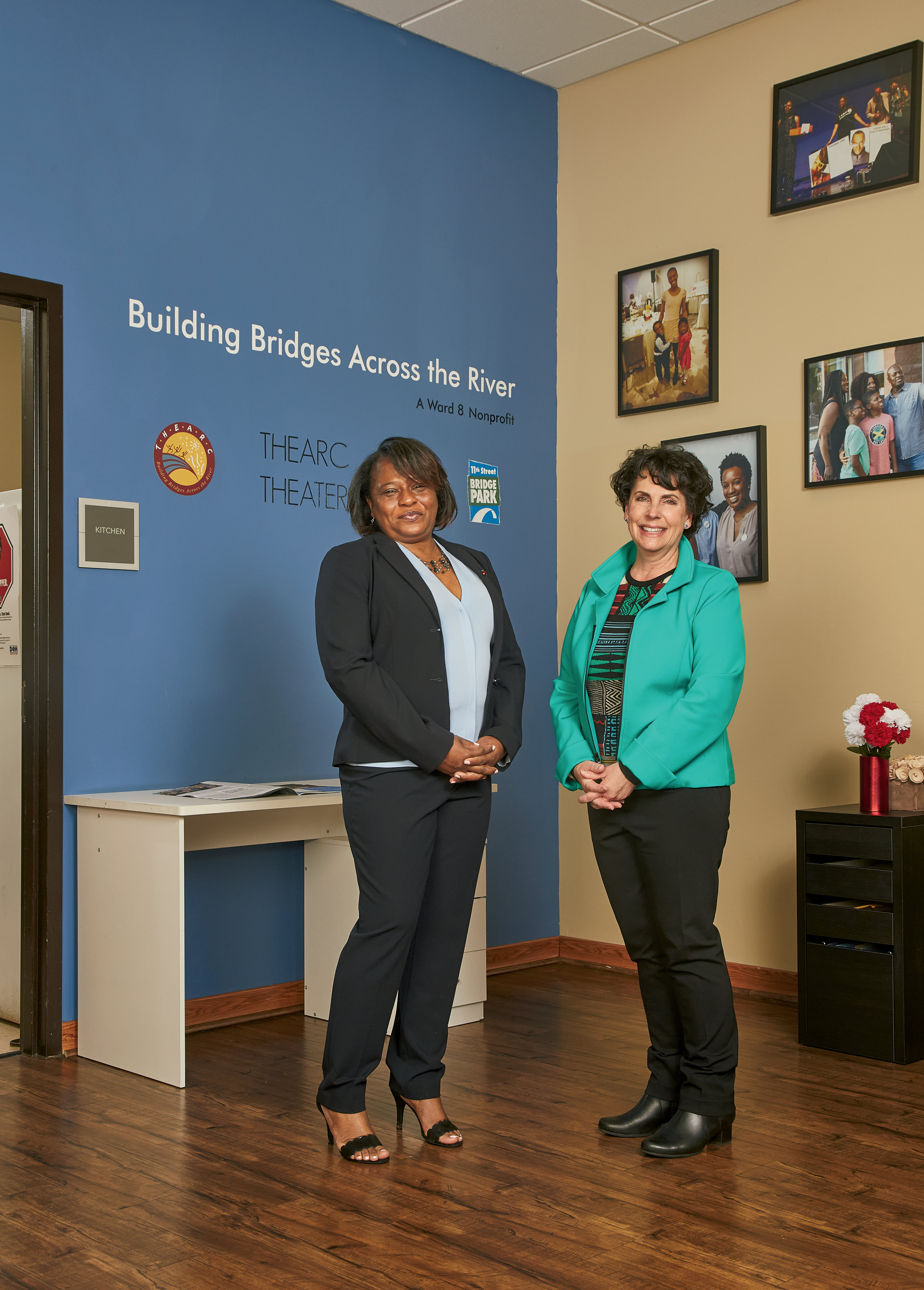
Much has become uncertain during the pandemic. But for the 72 previously homeless families who now have places to live thanks to Building Bridges to a Better Life, there’s one thing they can count on: Rhonda Mitchell and Lisa Smith.
Smith and husband Christopher Smith—CEO of the property-management and development firm WC Smith—launched BBBL in 2018 as a response to the District government’s call for assistance in finding homes for people living at a shelter that was closing. More than just housing in WC Smith properties, BBBL provides a support network through sister nonprofit Building Bridges Across the River, located at THEARC, the Southeast DC social-and-cultural-services campus that opened in 2005.
Mitchell, hired as a program manager for BBBL, was the boots on the ground. She worked closely with 72 previously homeless families, distributing more than $1,300 worth of household items and Giant gift cards to each as they arrived, then driving them to furniture and clothing stores to get settled in their new lives. Soon, Mitchell’s boots were joined by another set: Lisa Smith’s.
The two became an inseparable force at BBBL. They created finance classes and a book club (now virtual). They took children on field trips and planned family events. When Covid hit, they helped distribute hot meals from World Central Kitchen to families, produce from Martha’s Table to senior citizens, and sandwiches for people reluctant to leave home. Each week, they greet hundreds of people waiting in long lines and hand out groceries and produce from the Capital Area Food Bank.
“Not only are we providing healthy food in the food desert—we’re building community,” Smith says. “That’s one of our unwritten goals: to connect with people and make sure they know we’re all in this together.”
A person always feels more valuable when you address them by name. It puts a smile on their face because you took the time to remember them, and they didn’t need to do anything.
Alan Miller
Founder and CEO, News Literacy Project
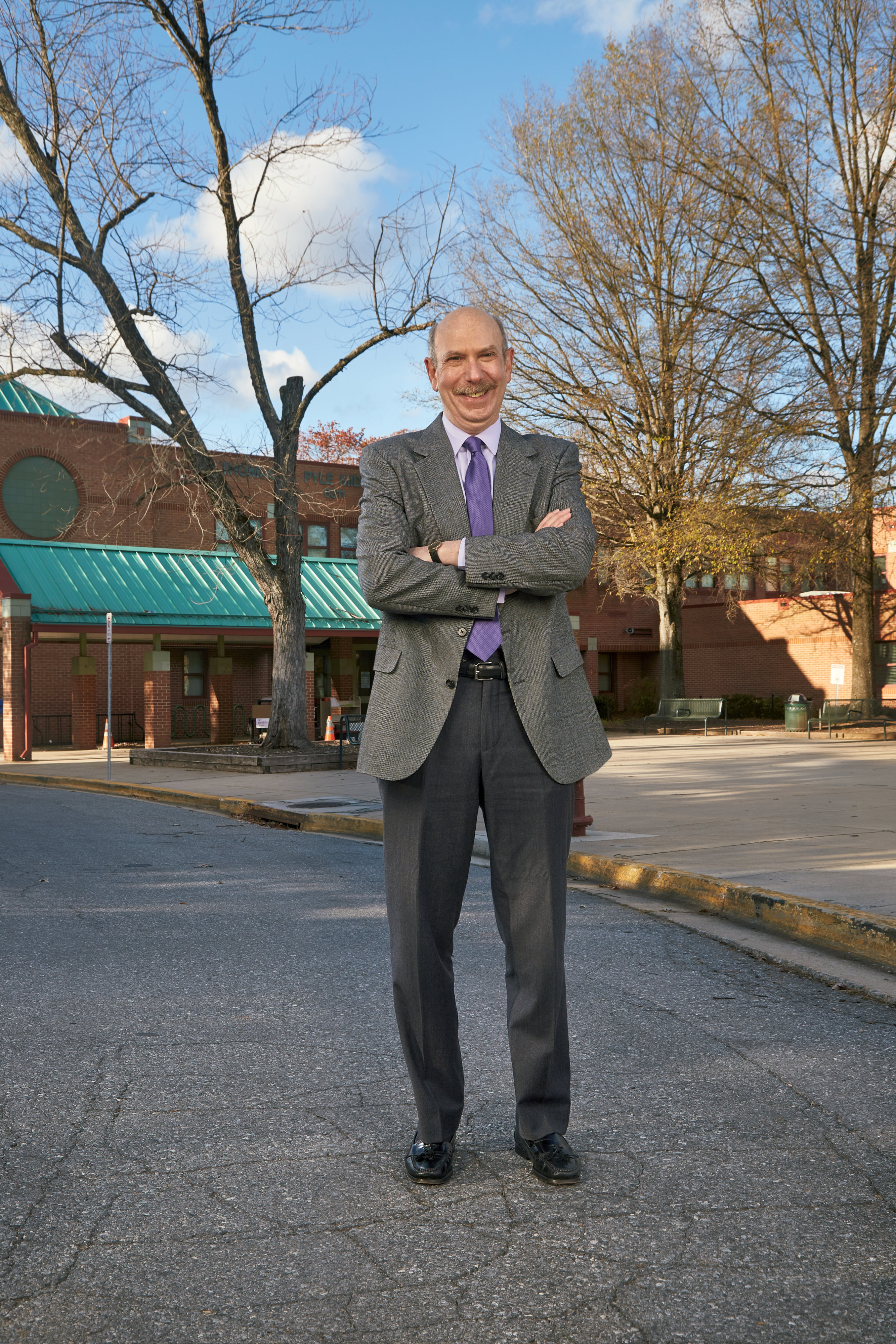
When Pulitzer-winning LA Times reporter Alan Miller conceived of the News Literacy Project in 2006, the media—and the world—was in a different place. Facebook and iPhones were just taking off, phrases like “fake news” and “alternative facts” weren’t mainstream, and the educational field of news literacy didn’t exist. But after speaking to his daughter’s sixth-grade classmates, Miller felt it was essential to teach youth how to be “smart, active consumers of news and information”—a goal that has never felt more urgent.
“I was concerned about how they were evaluating a tsunami of information from sources with varying credibility, accountability, and transparency—and that was on a PC,” says Miller, who launched NLP, a national education nonprofit, from his Bethesda home in 2008. “They’re coming of age when we have more valuable and credible information than ever, but that’s overwhelmed by information that seeks to divide, mislead, and exploit us. We have an obligation to give them tools to navigate this landscape in a way that can unite us around agreed-upon, verified facts.”
Those tools have come to fruition in Checkology, a free virtual-learning platform for middle- and high-schoolers that teaches how to discern credible information, bias, and misinformation. The program launched in 2016 and was gaining popularity, but after the election—and new revelations about social media and disinformation campaigns—it went viral.
Checkology, which like NLP is “rigorously nonpartisan,” has been used by educators in all 50 states and dozens of other countries. NLP also offers a wealth of other resources for adult learners, parents, and educators. By 2022, NLP’s goal is to reach 3 million students annually. The news-literacy mission has become even more dire in the pandemic, when discerning fact from fiction can truly be a matter of life or death.
We’ve reached a point where misinformation is an existential threat to the country’s public life, to its public health, and to our democracy. We want to see a sea change in attitudes and behavior around news and information much like we’ve seen around smoking and drunk driving. The difference? Those changes took a long time, and we don’t have a long time.
Leslie Strittmatter and Terri Stagi
Cofounders, Women Giving Back
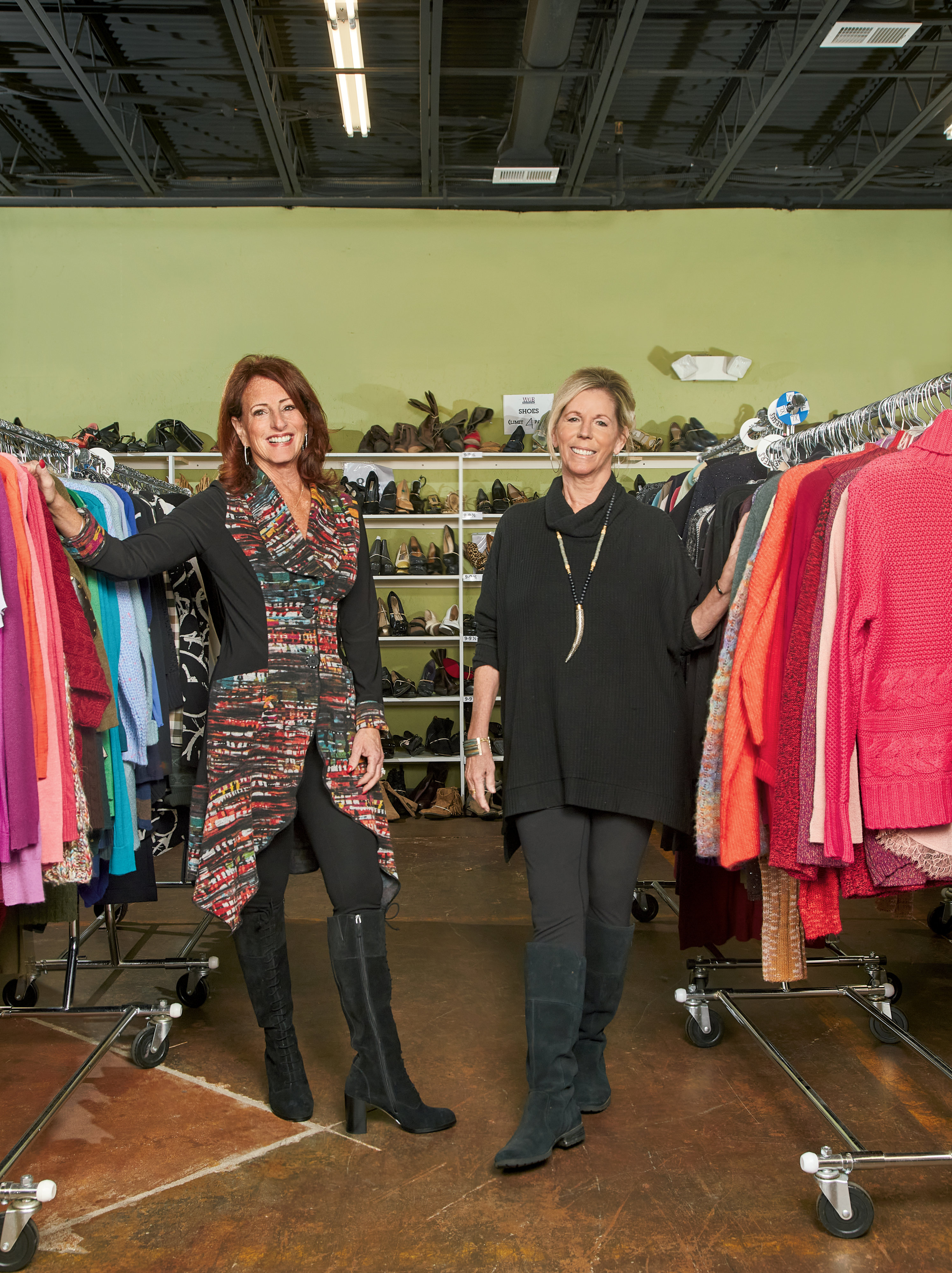
It started small. In 2006, friends Leslie Strittmatter and Terri Stagi invited their female colleagues in the male-dominated building industry to a clothing drive. By the end of the night, they had a sign-up sheet 50 names long for the next event. Women Giving Back, their Sterling-based nonprofit, was born.
“When you get a bunch of type-A women to put their minds together, forget about it—it’s no holds barred,” says Strittmatter.
Northern Virginia is an area of great wealth, but it’s also a place of significant need, especially among women who are transitionally experiencing homelessness due to domestic violence, poverty, or human trafficking. While working full-time, Stagi, Strittmatter, and cofounder Fiona Hughes (who has since moved on) opened their first “store”—no money is exchanged—in a Chantilly office building. Women in need can select 50 items of clothing, shoes, and accessories with the help of volunteer “personal shoppers” while their kids get free childcare and snacks. Soon, they needed a big warehouse. And then another, even larger one. They added programs for free kids’ Halloween costumes, school supplies, prom dresses, holiday gifts, and more. Some 150,000 women use their services each year.
When the pandemic struck, Women Giving Back switched overnight to a drive-through pantry, distributing 120,000 food items and 90,000 diapers in the first three months alone. Now they’re also hosting outdoor clothing-distribution events and looking for yet another, bigger warehouse—this time a 20,000-square-foot “forever home.”
We still think of ourselves as that little group of women who had a good idea and started something. And there’s still so much we want to do.
Dwight Schar
Philanthropist
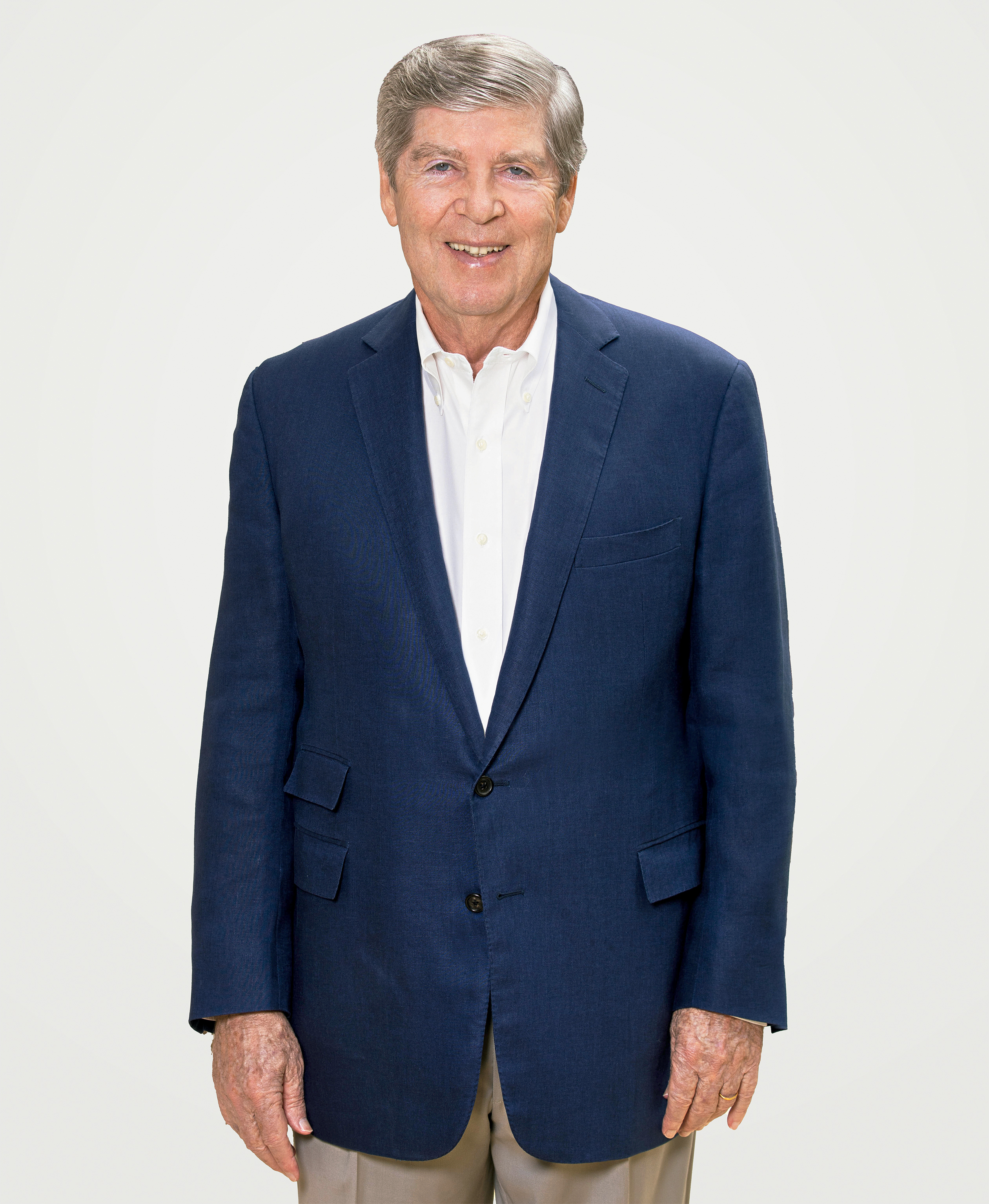
Dwight Schar, the billionaire founder of the Reston-based homebuilding powerhouse NVR, has a philanthropy philosophy: “Anything I do, I want to make a big difference.”
Schar worked his way up from humble beginnings. He attended a rural Ohio school, worked nights in a pipe-fitting factory through college, and taught high school while selling homes on the side. Because education changed his life, he wanted to help others. At George Mason University, he supported the fledgling Center for Regional Analysis, which provides critical research and data to local governments and businesses. Most recently, he donated $10 million to the university’s school of policy.
“If he gave his money to an elite institution, it wouldn’t make the difference, but he’s been nothing short of transformational here,” says Mark Rozell, dean of what’s now the Schar School of Policy and Government. “There are many first-generation college students and grant recipients at George Mason. I’m proud of the institution as a place that creates opportunities and changes people’s lives, and that’s what Dwight really believes himself.”
Schar is also changing the lives of cancer patients. In 2015, he helped Inova Fairfax Hospital acquire Exxon’s massive neighboring headquarters and donated $50 million—the largest single gift Inova has ever received—to build a state-of-the-art cancer research center. The Inova Schar Cancer Institute opened in April 2019; a fourth Inova Schar cancer-care site is slated to debut at Inova Loudoun in 2021.
In the past, Northern Virginia didn’t have a central place for excellent cancer care—patients would go to DC and Baltimore. Dwight was instrumental in changing that.
Anna Valero
Founder, Hook Hall Helps
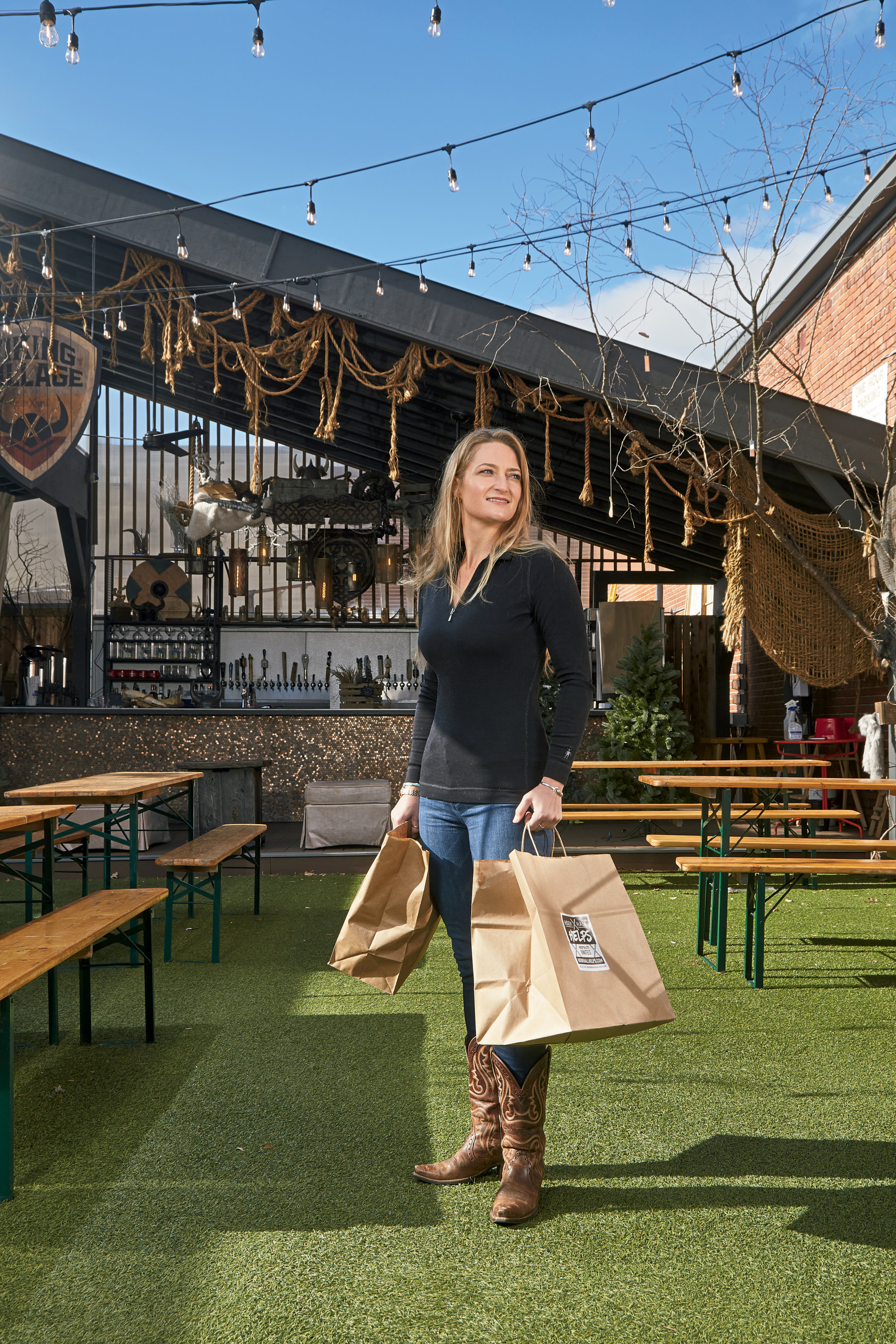
A background in event planning may not seem like the best asset in a pandemic. But when Washington’s bars and restaurants were forced to close for safety reasons, Anna Valero realized she had the infrastructure to mobilize what would become a vast relief effort out of Hook Hall, her bar and event space in DC’s Park View neighborhood.
“I knew our industry was getting hit the hardest, the fastest,” says Valero. “The antidote to fear and vulnerability is to act, so we were all action.”
Pre-Covid, the District’s hospitality industry employed more than 63,000 people. After having to furlough 75 employees herself, Valero and a skeleton crew of nine dove into the work of providing for the bar and restaurant workers who’d lost livelihoods. They connected with restaurant-supply companies to get toilet paper and cleaning products; organized chef-volunteers to make meals of fresh-food donations from restaurants that were shutting down; and teamed up with the Restaurant Association Metropolitan Washington to establish a citywide Worker Relief Fund, which raised more than $675,000. As the crisis wore on, Valero introduced free virtual programming—“everything from the history of gin to how to rework your résumé,” she says.
Hook Hall Helps paused operations during the industry’s more lucrative summer months to save up for what could turn out to be a devastating winter. Now the organization is back providing hot meals and creative tools such as industry roundtables to help employees navigate the new landscape.
Our corporate motto for our customers was always to deliver the unexpected. Now how can we come together to deliver the unexpected for folks who are having a really hard time?
Rosie Allen-Herring
President and Chief Executive Officer, United Way National Capital Area
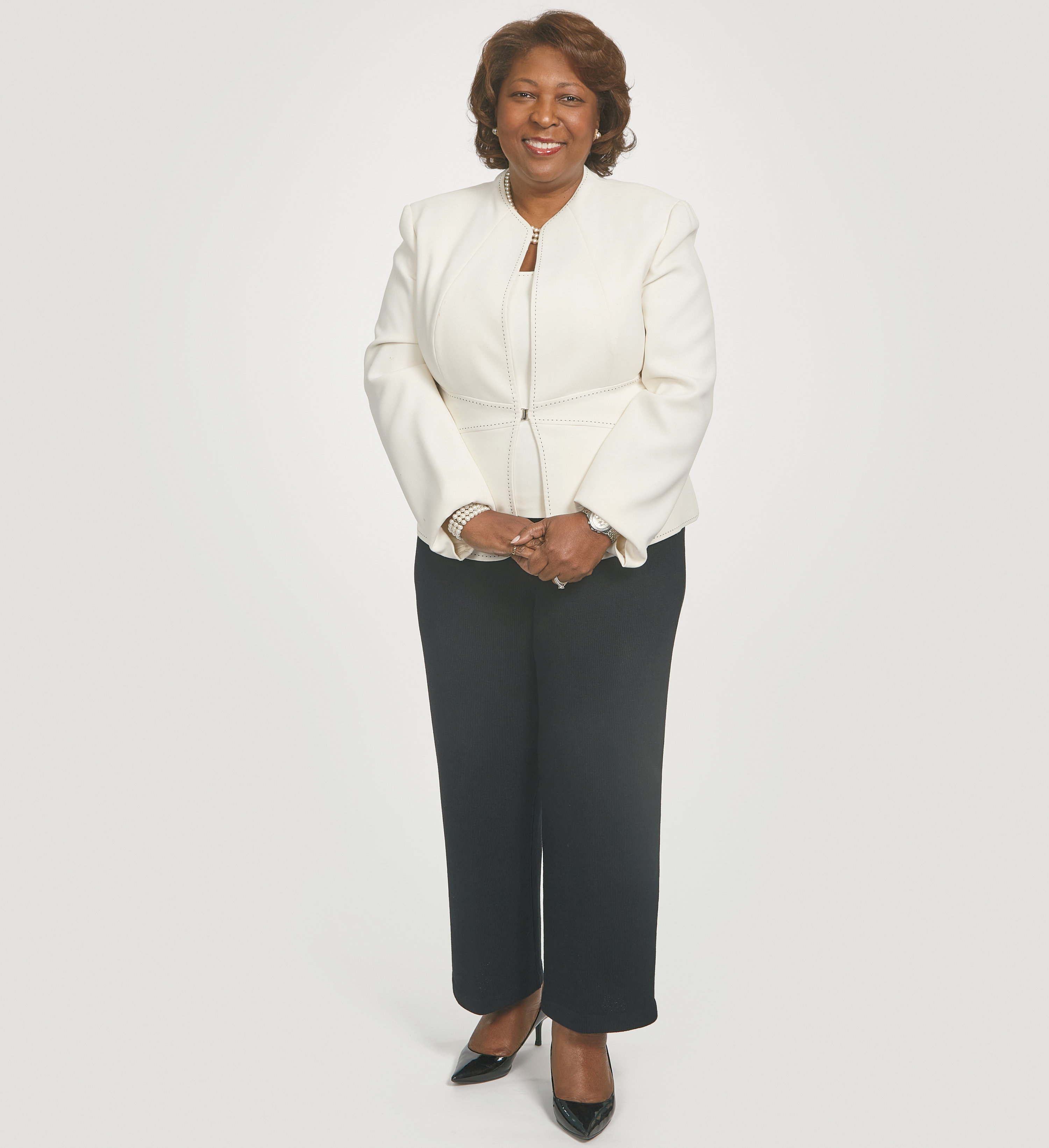
How do you change an influential arm of a 130-year-old institution? If you’re Rosie Allen-Herring, who took charge at United Way National Capital Area in 2013, it’s a matter of style and substance.
United Way NCA works with nearly 500 nonprofit and corporate partners in the areas of health, education, and economic opportunity—not just raising and allocating funds (Allen-Herring is responsible for approximately $245 million during her tenure) but also creating and executing programs that improve communities. But that wasn’t always the case, or the perception.
“People thought of United Way as a pass-through organization, not that we were doing anything ourselves or bringing expertise to the table,” says Allen-Herring, who came to the group after 21 years rising through the ranks at Fannie Mae. “Now they know that’s not the case.”
Credit, in part, Allen-Herring’s initiatives that have transformed the nonprofit from a philanthropic middleman to an innovative partner. Take one example among United Way’s $25-million “community commitment” initiatives: the “middle-school success” program to prepare 12,000 low-income students for high school. Traditionally, attention focused on early-childhood education. “No one was talking about middle school, and that’s where all the data says that if a young person leaves with the supports they need, they’re four times more likely to graduate on time,” says Allen-Herring, a Howard alum. “We chose to go where no one was daring to go.” United Way has expanded the program to a dozen Title I schools in the District, Arlington, and Prince George’s County.
Allen-Herring, who describes herself as a “servant leader,” has long been lauded as an innovator in the philanthropy world. At Fannie Mae, she helped create and then direct the Community Investment and Engagement division, where she managed a $100-million annual budget. Starting this year, she’ll serve as the first African American female chair of the Greater Washington Board of Trade.
I’m a finance person. I bring the business of philanthropy to the table so that everyone can see themselves in it.
Dr. Barbara Van Dahlen
Founder, Give an Hour; executive director, PREVENTS
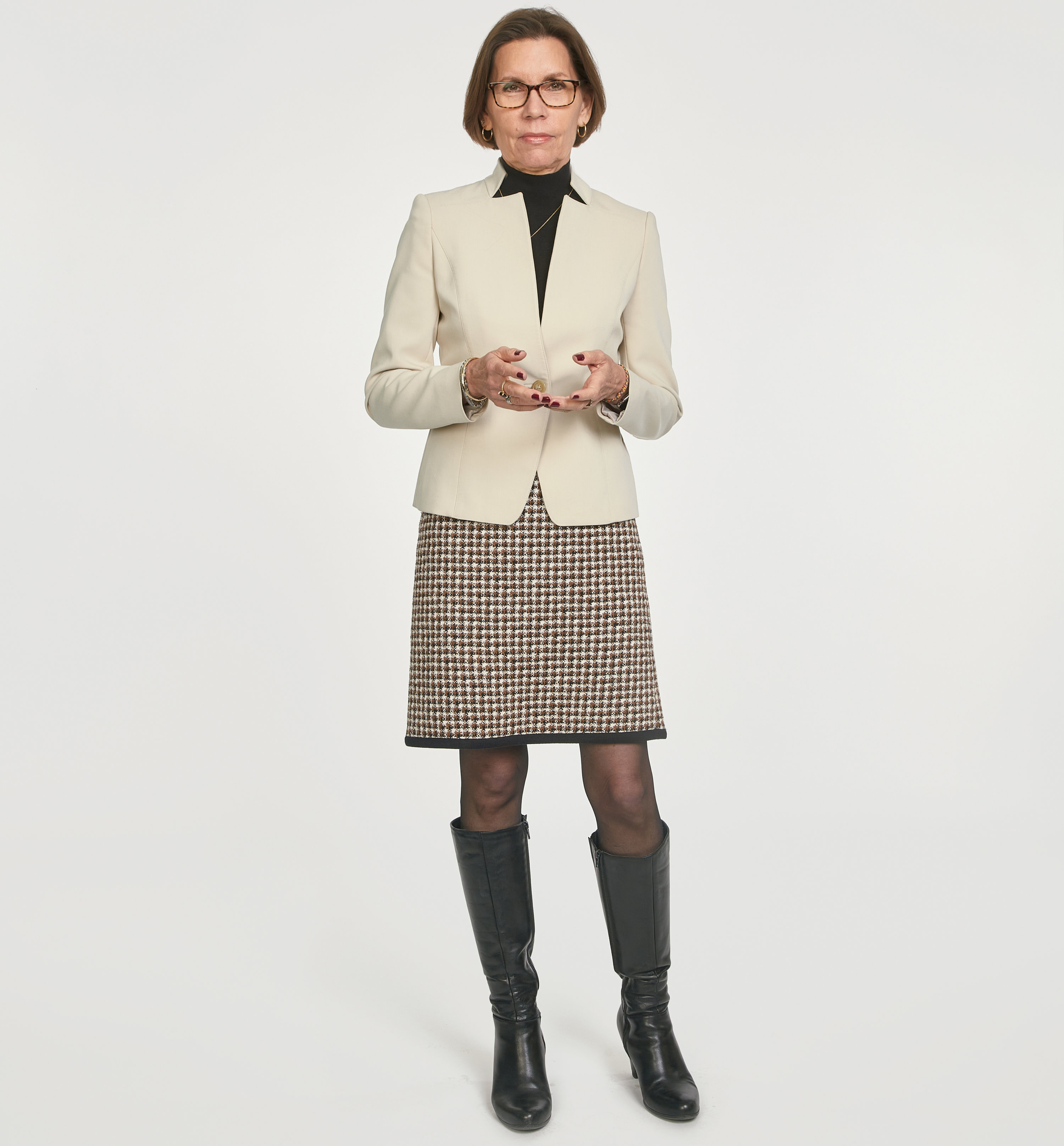
Dr. Barbara Van Dahlen has a talent for starting—and changing—conversations about mental health, on both the personal and national levels. The dialogue began with Give an Hour, a nonprofit she launched in 2005 that enlisted mental-health professionals to provide free services to US troops and veterans—many returning from Iraq and Afghanistan—and their families.
“I literally used Nonprofits for Dummies. I just had a sense of urgency that these men and women are coming back from war, they’re hurting, and we’re not ready,” says Van Dahlen, a clinical psychologist. “It was a belief that mental-health professionals would give an hour of their time if we could give them a way to do it.”
Give an Hour boasts a national network of 5,000 care providers who have collectively donated more than $30 million worth of services. (During the pandemic, it has expanded its reach to hospital workers.) Van Dahlen further shifted the culture around mental health with the Campaign to Change Direction, a 2015 initiative that pulled in bigwigs such as Michelle Obama, Jill Biden, and Prince Harry to destigmatize topics like depression and suicide. It became a springboard for Van Dahlen’s even more massive project leading PREVENTS (the President’s Roadmap to Empower Veterans and End a National Tragedy of Suicide), a presidential task force created in 2019 to address the high suicide rate among veterans, which is one and a half times higher than in the civilian population.
“The first thing I said when accepting was ‘I understand this comes out of a desire to address suicide in the veterans’ community, but we can’t end veteran suicide if we don’t tackle suicide as a nation.’ ”
Within a year, Van Dahlen built yet another big-tent initiative from scratch that pulled in multiple government agencies and bipartisan support: Reach.gov, the first national public-health campaign focused on suicide, launched in July. “It says to the nation: This is where you go to learn how to reach for people who are struggling, and reach if you are struggling.” On the side, she’s a consultant for the ABC show A Million Little Things, acclaimed for its honest conversations about mental health.
We can’t change something we can’t even talk about.
Indira Henard
Executive director, DC Rape Crisis Center
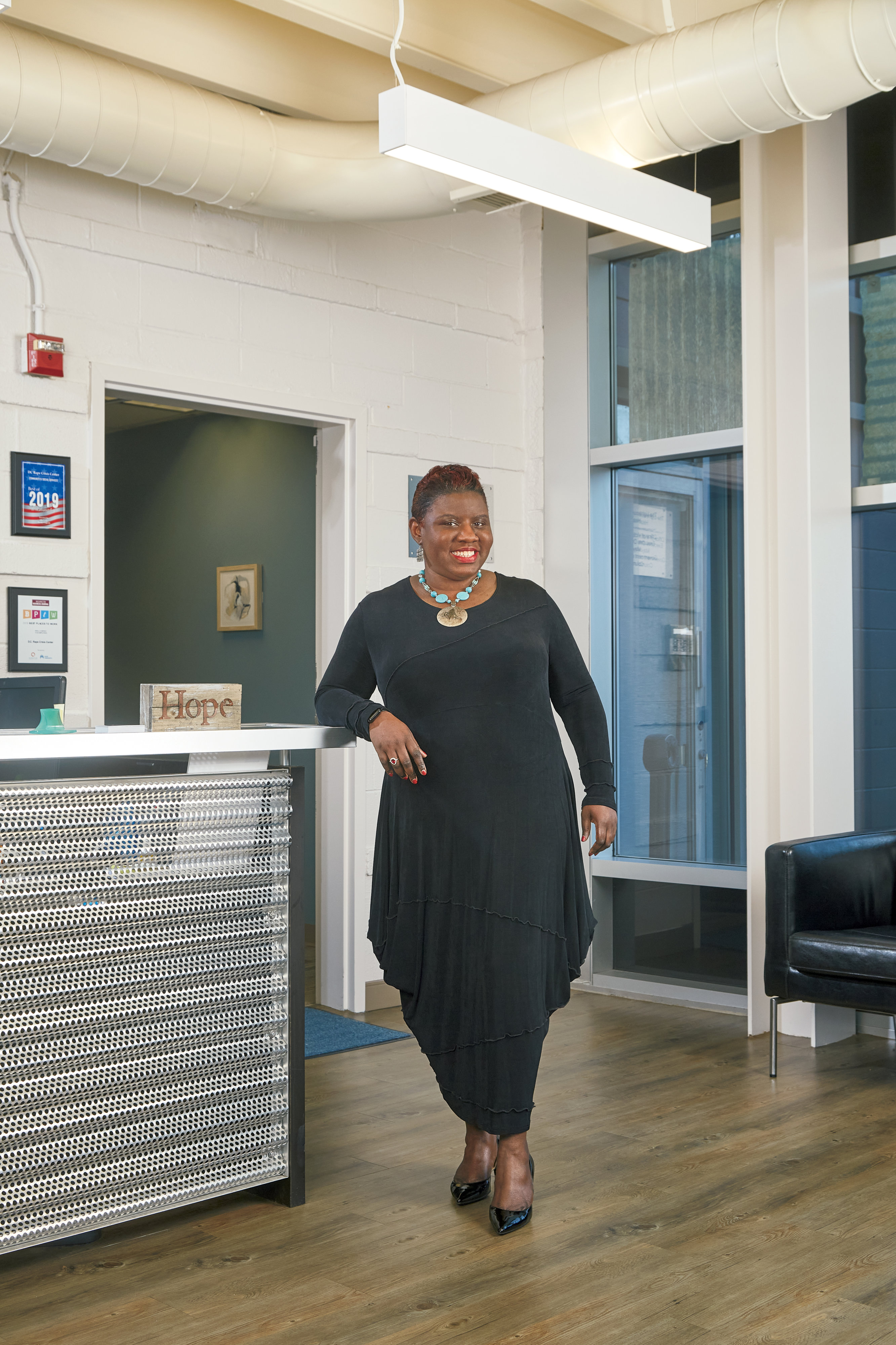
In 2008, Indira Henard was at a crossroads. The native Chicagoan was working for Obama while volunteering nights and weekends at the DC Rape Crisis Center in Fort Totten—the oldest such center in the country, now in its 49th year.
“I did some soul-searching,” says Henard, a trained social worker. “Instead of taking the yellow brick road down to 1600 Pennsylvania Avenue, I took a major detour—and I have not looked back.”
For the 400-odd survivors of sexual violence the nonprofit helps each year, Henard’s decision was, in many cases, lifesaving. By the time she was named executive director in 2016, DCRCC was itself in crisis—more than $100,000 in debt and in need of physical repair. “We were on life support—no one thought we would make it,” says Henard. She acted quickly, securing multimillion-dollar funding, recruiting a brand-new board, overseeing a renovation, and retiring the nonprofit’s debt. The swift reform was so impressive that Henard became a consultant for rape crisis centers nationwide and traveled abroad to open the first one in Lagos, Nigeria.
The timing for DCRCC’s reinvention was critical: Between the 2017 #MeToo movement, which changed awareness and conversation around sexual abuse, and the 2020 pandemic, DCRCC has experienced sharp increases in demand for therapy and hotline calls. Since March alone, Henard has added staff, a second hotline, and both virtual and remote services.
Survivors are the GPS that we take our direction from. The work we do is sacred and unscripted. We know that this is heart work and not hard work.
